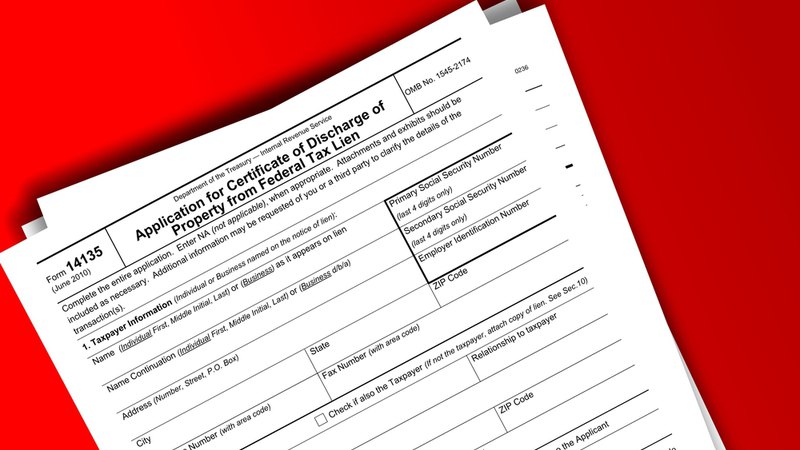What Is A Lien On A Property?

When dealing with property ownership, understanding the definition of lien real estate is crucial. This ensures that the creditor can recover the owed amount if the debtor defaults. Liens can significantly impact property transactions and ownership rights, making it essential to comprehend how they work and how to manage them. Ensuring a clear title report is crucial for uncovering any existing liens that could affect property transactions and ownership rights. In this article, we’ll find out what a lien is on a property and teach you how to work with it.
What Is A Lien In Real Estate?
Liens serve as a safeguard for creditors, ensuring they have a legal avenue to recover debts. What is a lien in real estate? A lien is a legal claim against a property, providing a creditor with a security interest until a debt is repaid. When a lien is placed on a property, the owner cannot sell or transfer ownership without addressing the lien. They can arise from various circumstances, including mortgages, unpaid taxes, or legal judgments.
Liens are recorded in public records, alerting potential buyers and other interested parties about the outstanding debt. This public notice ensures transparency in property transactions and protects the interests of creditors. Liens remain attached to the property until the debt is resolved, either through payment or legal means.
How Do Lien On A Property Work?
Liens work by establishing a creditor's legal right to a debtor's property. When a lien is filed, it becomes part of the property's record, impacting its marketability and the owner's ability to transfer the title. The process typically involves the following steps:
- Debt Creation: A lien on a property arises when a debt is incurred. This could be through a loan, unpaid taxes, or a court judgment.
- Lien Filing: The creditor files the lien with the appropriate government office, such as the county recorder or clerk's office, making it a matter of public record.
- Notification: The property owner is notified of the lien, which details the amount owed and the creditor's claim.
- Impact on Property: The lien on a property restricts the owner's ability to sell or refinance the property until the debt is satisfied.
- Lien Satisfaction: The lien is removed once the debt is paid or otherwise settled. The creditor provides a lien release on a property, which must be filed to clear the property's title.
What Types of Lien on a Property are Available?
Liens on a property can be categorized into several types, each with specific characteristics and legal implications. Understanding these types can help property owners and creditors manage their rights and obligations effectively.
- Mortgage Lien: Is a mortgage a lien? Yes, and this is the most common type of lien. When a homeowner takes out a mortgage loan, the lender places a lien on the property as collateral. This lien remains in place until the loan is fully repaid. If the homeowner defaults on the mortgage, the lender has the right to foreclose on the property to recover the loan amount.
- Tax Lien: Tax liens on a property are imposed by government entities when property taxes, income taxes, or other taxes remain unpaid. These liens can be placed on both real estate and personal property. If the taxes are not paid, the government can enforce the lien by seizing and selling the property. Tax liens take priority over most other liens, meaning they must be satisfied first if the property is sold.
- Mechanic’s Lien: Contractors, subcontractors, or suppliers who have provided labor or materials for a property but have not been paid can place a mechanic’s lien on the property. This lien ensures that the contractor or supplier can recover the owed amount. Mechanic’s liens are common in the construction industry and can complicate property sales or refinancing until they are resolved.
- Judgment Lien: A judgment lien on a property is granted by a court when a creditor wins a lawsuit against a debtor and is awarded a monetary judgment. The creditor can place a lien on the debtor’s property to secure the judgment amount. This lien can attach to both real and personal property, including homes, land, and vehicles, and remains until the debt is paid or the lien expires.
- Child Support Lien: When an individual fails to pay court-ordered child support, a child support lien can be imposed. This lien gives the custodial parent a legal claim on the delinquent party’s property. The lien ensures that child support payments are prioritized, and in some cases, the property can be seized or sold to satisfy the overdue payments.
- Attorney’s Lien: Attorneys can place a lien on a property to secure payment for legal services rendered. This lien ensures that the attorney can recover their fees if the client receives a settlement or judgment in a legal case.
Each lien type comes with specific rules and procedures, making it essential to address any lien promptly to maintain clear property title and financial stability.
What Does It Mean To Have A Lien On Your House?
When a lien is placed on a home, it can have several significant consequences for the property owner. What does it mean to have a lien on your house?
- Title Restrictions: The lien is recorded on the property’s title, preventing the owner from selling or refinancing the property without addressing the lien.
- Credit Impact: A lien on a property can negatively affect the owner’s credit score, making it harder to obtain loans or other forms of credit.
- Legal Action: If the debt remains unpaid, the lienholder may initiate foreclosure proceedings to force the sale of the property and recover the owed amount.
- Public Record: The lien becomes part of the public record and is visible to potential buyers, lenders, and other interested parties in Texas.
- Financial Pressure: The presence of a lien adds financial pressure on the property owner to resolve the debt quickly to regain full control of their property.
How to Get a Release of Lien on a House?

Removing a lien involves several steps to ensure that the property’s title is clear and free from encumbrances. How to get a release of lien on a house?
- Pay the Debt: The most straightforward way to remove a lien is to pay off the debt in full. This includes satisfying any interest or penalties that may have accrued.
- Negotiate: In some cases, it may be possible to negotiate a settlement with the creditor for a lesser amount. Ensure any agreement is documented in writing.
- Obtain a Lien Release: Once the debt is paid or settled, request a lien release from the creditor. This document confirms that the lien has been satisfied.
- File the Release: Submit the release of the lien on real property to the appropriate government office, such as the county recorder’s office, to update the public records and clear the property’s title.
- Legal Action: If a lien is disputed or improperly placed, seek legal assistance to challenge and release the lien mortgage through the court system.
Realizing the Importance of Liens on a Property with CertSimple
A lien represents a legal claim against a property used to secure a debt, and it remains until the debt is satisfied. By knowing the lien on property meaning, the types of liens that can be placed on a property, the consequences of having a lien, and the steps to remove one, property owners can better manage their financial and legal responsibilities. If you encounter issues with a lien, questioning yourself, “What is a release of lien on a property?” consulting with a legal professional can provide valuable guidance and ensure your rights are protected. See below for our FAQs section.
FAQ About Lien on a Property
1. Is a lien the same as a loan?
No, a lien is not the same as a loan. A lien is a legal claim against a property that serves as security for a debt. A loan, on the other hand, is a sum of money borrowed that must be repaid, typically with interest.
2. Can a house be sold with a lien on it in Texas?
Yes, a house can be sold with a lien on it in Texas, but the lien must be addressed before the sale can be completed. Typically, the lien is paid off from the proceeds of the sale, ensuring the new owner receives a clear title to the property.
3. Does a lien hurt your credit?
Liens are public records, and their presence can negatively impact your credit score. This can make it more difficult to obtain loans or other forms of credit. Additionally, having a lien indicates that you have an unresolved debt.
4. What happens when a lien is put on your bank account?
When a lien is placed on your bank account, the creditor may freeze the funds in your account. This means you may not be able to access your money until the debt is resolved. The creditor can also initiate a legal process to seize the funds to satisfy the debt.